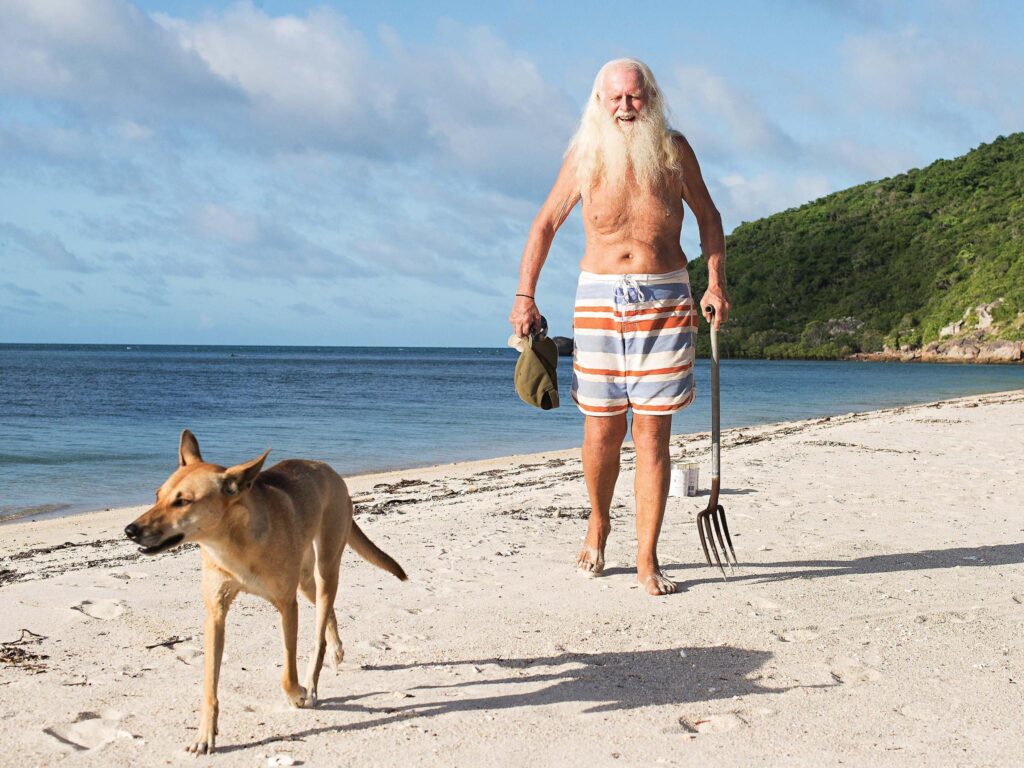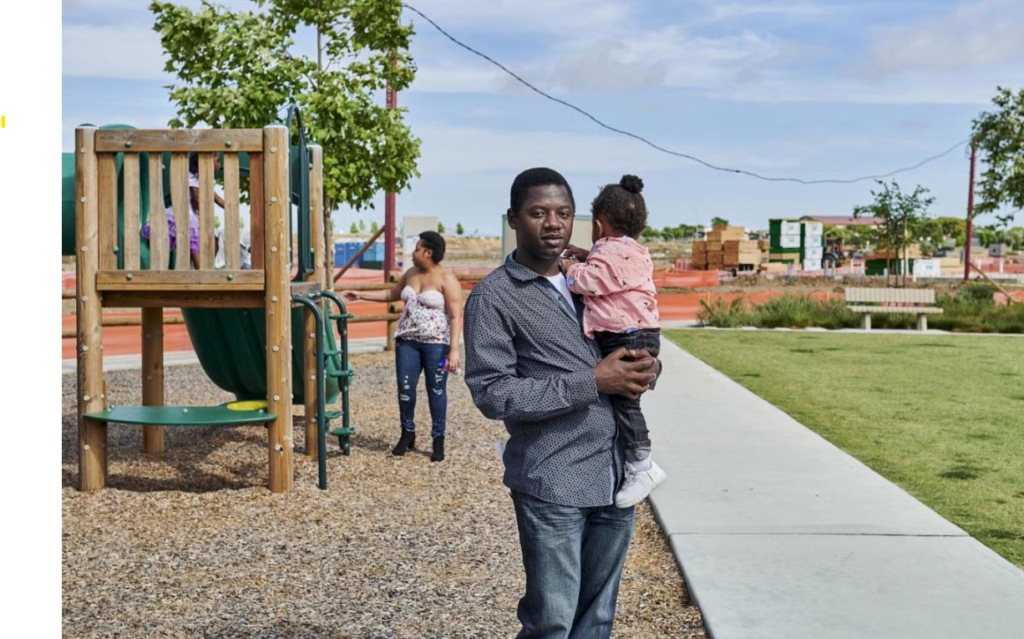Imagine being a millionaire and losing everything overnight. In this article, we’ll explore three stories of people who lost everything in the financial market. One of them isolated themselves on an island forever. But do these stories reinforce the stereotype that the financial market is like a casino, or did these speculators lose everything due to errors that could have been avoided?
Let’s delve into the story of the day trader who grew his account to $1 million and then lost it all in a month. We’ll also look at a fundamentalist trader who lost $100 billion in 2 days. And we’ll explore the tale of an entrepreneur who went public on the stock exchange but ended up losing everything and becoming a kind of Robinson Crusoe.

Bill Hwang
The first story is about Bill Hwang, the man who lost $100 billion in 2 days. Imagine him coming home to deliver that news to his wife. He was born in South Korea in 1964 and later moved to the United States, where he studied economics at UCLA. But his career in the financial market began when he landed a job at Hyundai Securities in New York.
Later, he worked at an investment firm called Peregrine Investments Holding, where he met billionaire hedge fund manager Julian Robertson, founder of Tiger Management, one of the pioneering hedge funds of the 1980s. The average annual return between 1980 and 1998 was over 30%, while the S&P 500 yielded just over 12% during the same period.
For those unfamiliar, Julian Robertson started with just over $8 million of his own and his family’s money and turned it into $20 billion over two decades. He was the mentor of Bill Hwang and even provided him with money to open his own hedge fund, Tiger Asia Management, which, as the name suggests, focused on investments in the Asian market. However, its headquarters were in New York, and it had $5 billion under management at its peak.
In 2012, problems began for Bill Hwang when he was fined $44 million for insider trading, meaning he had access to privileged information and used it to trade in the financial markets, in this case, he shorted shares of three Chinese banks.

He then closed down Tiger Asia and opened a Family Office business (Archegos Capital). For those unfamiliar, when you become very wealthy, you kind of have to open a company to manage your wealth.
The financial tragedy begins now. He borrowed money from banks such as Credit Suisse, Goldman Sachs, and Morgan Stanley (Numura, Deutsche Bank, UBS), leveraging himself by buying shares such as Shopify and ViacomCBS (Baidu). And we’re talking about loans in the billions. His method was fundamental analysis, so he looked at the financial statements of these companies and built a portfolio, but a highly concentrated one. The problem was that he used a financial instrument called Swaps.
The banks that lent him money appeared as holders of those stock positions. This kept him anonymous for a long time. But in March 2021, the stocks in his portfolio began to plummet, and he was leveraged 5 times.
All positions were being liquidated in a cascading effect, and he lost $20 billion in 2 days. The trial of the former billionaire was scheduled for late 2023. I’m writing this article before the trial, so if you’re reading this in the future, you’ll know the outcome of this story.
David Glasheen
Now let’s delve into the story of Australian David Glasheen, also known as the real-life Robinson Crusoe, as he abandoned city life and moved to a deserted island after losing everything in the 1987 crash.
He was a successful businessman from Sydney Bay until he started a mining company and eventually managed to go public on the Australian Securities Exchange.
He rode the bull market of the 1980s, and his company’s shares skyrocketed from 25 cents to $1.40. Now he was officially a millionaire, with about $10 million on paper. However, what he didn’t know was that one of the worst crises in history was about to happen. On October 19, 1987, Black Monday, the stock exchanges in New York began to plummet at an unprecedented rate, and all exchanges around the world were dragged down by panic.
The problem was that almost all of David’s wealth was tied up in shares of his own company, and he watched as the stock prices fell from $1.40 to 28 cents, and then to 2 cents. He went from being a millionaire overnight. In 1991, the bank repossessed his house, and now he was officially broke, seeking shelter on friends’ sofas for the night.
Over the years, he managed to survive until he heard about an island for sale for $1.2 million. Of course, he didn’t have that amount, but he managed to convince some investor friends that the island was a good investment. The island was divided on paper into 8 parts, with David owning one-eighth. He struck a deal to live on the island and take care of it, even building a resort, which never materialized.

In 1997, he packed a small suitcase and moved to the island with his girlfriend at the time. But she couldn’t handle life without electricity, without being able to order a pizza, and left the island, leaving David with a dog and the little house he built.
The romantic idea of a perfect life on a paradise island couldn’t have been further from the truth. He lost two dogs bitten by venomous snakes, and the island is full of mosquitoes and ants. The waters are infested with sharks, and believe it or not, there are even saltwater crocodiles on the island.
As if that wasn’t enough, the island has been hit by three cyclones, which nearly took David’s life. The last cyclone was in 2019, Cyclone Trevor, which caused damage to the island and David’s house. A few years ago, he had an accident and fractured his hip, needing to be rescued by a helicopter and taken to the hospital.
He claims that in 2003, actor Russell Crowe anchored his yacht near the island during his honeymoon and asked to take a photo with David, but he refused. Today, he lives with two mannequins, Miranda and Phillys, and two dogs.
Richard Dobatse
The next story is about a day trader who made a million dollars but then lost it all back to the market. Richard Dobatse lives in San Diego, California. In 2017, he downloaded a day trading app called Robinhood. Founded in 2013 by two entrepreneurs (Vladimir Tenev and Baiju Bhatt), Robinhood’s mission was to democratize access to the financial markets, which historically was only accessible to the wealthiest segment of the population.
They created a very intuitive app, with few buttons, lots of emojis, no brokerage fees, making it easy for anyone to click the buy and sell buttons for sophisticated financial instruments, from stocks to cryptocurrencies. Robinhood gained popularity, surpassing a valuation of $1 billion in 2017, which was when Richard started using the app.
The problem is that Richard took out a $15,000 loan to start his day trading operations. He initially incurred losses, even had to take out two more loans of $60,000 each, but managed to turn the tide and grew his account to $1 million by 2021. If the story ended there, we wouldn’t be talking about Richard, as this video is about people who lost everything in the financial markets.

He lost control of his day trading operations and started giving everything back to the market, going from $1 million to $6,000. Richard’s mistake started with taking out loans for day trading. Never do this. Second, he jumped into the market without a strategy; it was pure luck that he grew his account to $1 million before losing it all.
And from the numbers, it’s clear there was no risk management. You don’t grow an account from a few thousand to a million so quickly unless you either leverage heavily or concentrate everything on an asset that multiplies several times.
So, look at all the mistakes he made. He deposited loan money into the brokerage account, leveraged himself, had no trading plan, no risk management. Because if you reach $1 million, you have to set a point: “this account cannot go below $200,000, if it reaches there I stop trading, take a break from the market, try to recover somehow,” you don’t keep trading until it reaches zero.
The Common Mistake: Lack of Management
And just like the other stories, there was no diversification. Because if he trades in 2 markets with negative correlation, if one stops, at least in the other he can see the color of profit, so to lose a million like that, he certainly concentrated, but he didn’t go into details in the interview he gave to the New York Times, so we can only speculate.
And Bill Hwang’s case has its similarity, although in a proportion of billions, very different, but Bill Hwang was leveraged 5 times, and also did not diversify, was concentrated in ViacomCBS stocks.
And the other one, Santa Claus on vacation on the island, same thing, concentrated on his own company’s stocks, comes the crash of 1987, he loses everything, and if he had a rule to have 25% in government bonds, 25% in cash. So, diversify not only your investments but also your day trading operations, avoiding opening multiple positions in correlated assets. Never expose yourself to the risk of ruin; the next crash can come at any time. How are you preparing for that?
Check out my video about these traders who lost everything:
